Sri Lanka, the pearl of the Indian Ocean, is known not only for its stunning beaches, fascinating temples and diverse wildlife, but also for its delicious and spicy cuisine. Sri Lankan cuisine is characterized by the use of fresh ingredients, aromatic spices and diverse flavors. In this article, we will take you on a culinary journey through Sri Lanka and introduce you to the main ingredients, traditional dishes, snacks, drinks and food culture of the country. In the process, we will also show you how to get the most out of your trip as a tourist and enjoy the tasty cuisine of Sri Lanka.
Table of contents
1. Main ingredients and spices in the Sri Lankan cuisine
Sri Lankan cuisine is characterized by the use of fresh, regional and seasonal ingredients. Here are the main ingredients found in many dishes:
1.1 Rice

Rice is the staple food in Sri Lanka and is served in almost every meal. There are several varieties of rice grown in the country, but the most common is white rice. Rice is often served with various curries and side dishes to provide a complete meal.
1.2 Coconut

Coconut is another important element of Sri Lankan cuisine. Coconut milk, coconut oil, shredded coconut and coconut water are used in many dishes to add flavor and texture. Coconut is not only an important element of cuisine, but also a symbol of Sri Lanka’s culture and economy.
1.3 Spices and Herbs
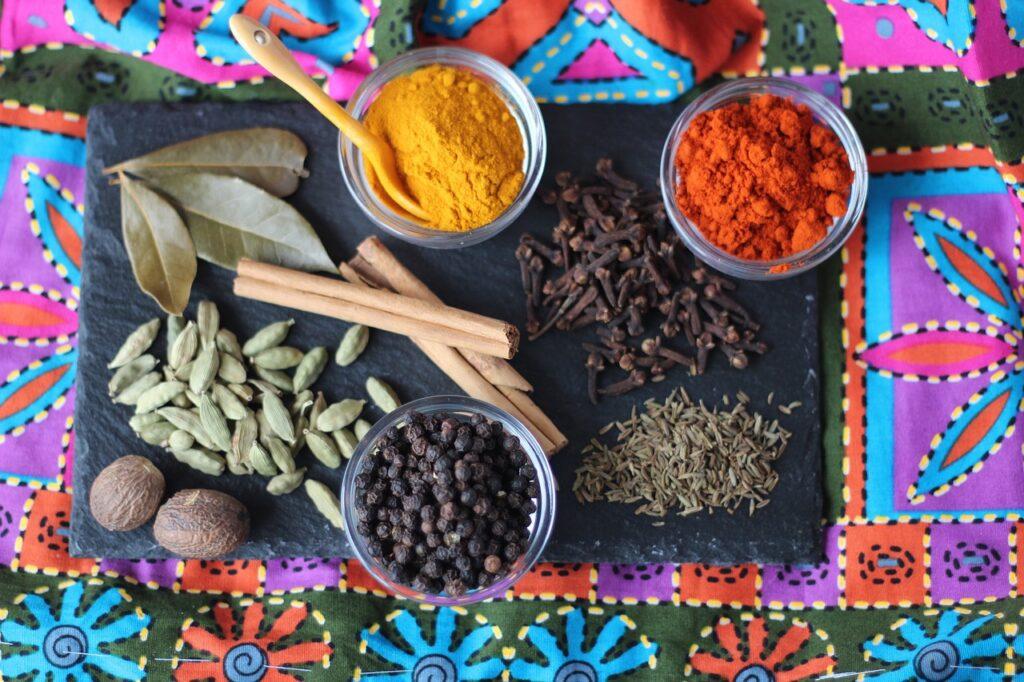
Sri Lankan cuisine is known for its rich and spicy flavors. Spices and herbs play a crucial role in the preparation of dishes. Some of the most common spices are turmeric, cumin, coriander, fennel, cardamom, cloves, cinnamon and pepper. Fresh herbs such as curry leaves, pandan leaves, lemongrass and coriander are also used to add flavor and aroma to dishes.
2. Traditional dishes and specialties
Sri Lankan cuisine is characterized by a variety of delicious dishes and specialties. Here are some of the most famous dishes that you should try during your trip to Sri Lanka:
2.1 Rice and Curry

Rice and Curry is the national dish of Sri Lanka and consists of boiled rice served with a selection of different curries and side dishes. The curries can be made from vegetables, meat, fish or seafood and are often hot and spicy. Side dishes can include lentils, beans, leafy greens or pickled vegetables. The various components are arranged on a banana leaf or plate and served together with rice and papadam, a crispy, thin flatbread.
2.2 Hoppers (Appa)
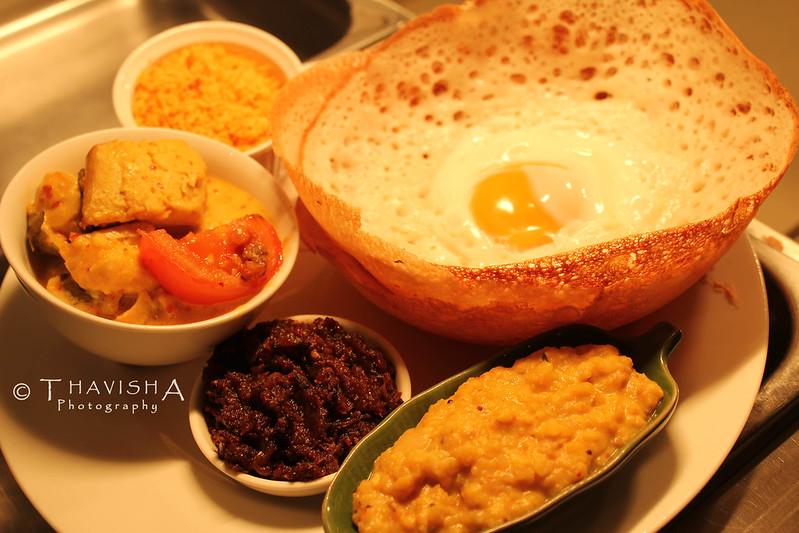
Hoppers are another specialty of Sri Lankan cuisine. They are thin, shell-shaped pancakes made from a fermented rice flour and coconut milk mixture. There are several varieties of hoppers, such as plain hoppers, which are served without filling, egg hoppers, which have an egg fried in the center, and string hoppers, which are made of thin rice noodles and formed into small nests. Hoppers are often served for breakfast or dinner and are an ideal side dish for curries and sambols.
2.3 Kottu Roti

Kottu Roti is a popular street food dish in Sri Lanka. It consists of roti bread (flat bread) cut into strips and prepared on a hot plate with vegetables, meat or fish and a spicy sauce. The ingredients are chopped and mixed with two metal spatulas, which gives the dish its characteristic sound and taste. Kottu Roti is a delicious, filling and inexpensive dish that you should definitely try on your trip to Sri Lanka.
2.4 Lamprais
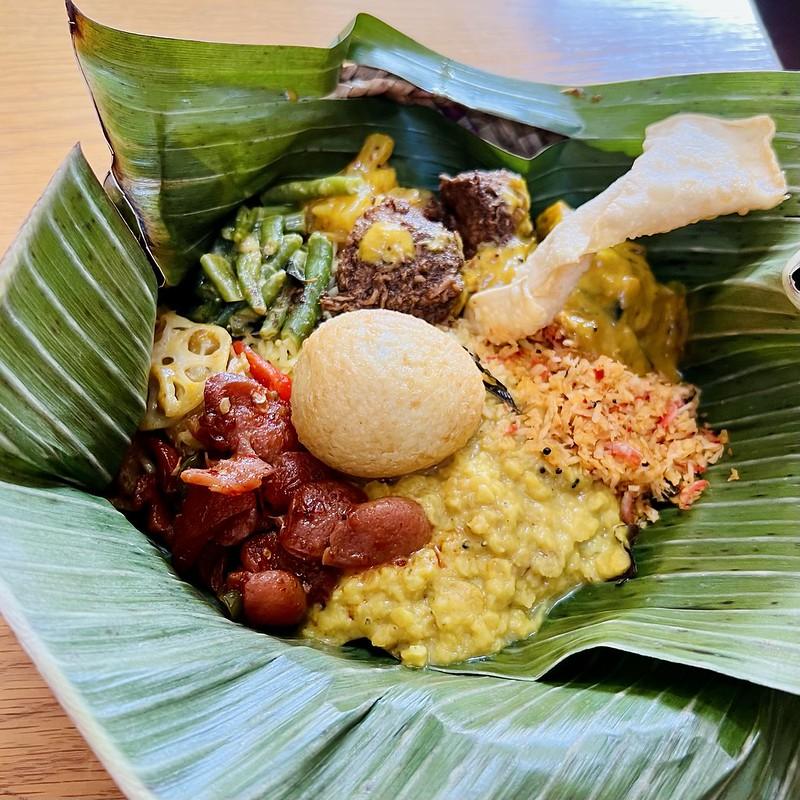
Lamprais is a typical dish of Burgher cuisine, a mixture of Sri Lankan and Dutch influences. It consists of rice mixed with meat curry, meatballs, fried onions and spicy eggplant mojo wrapped in banana leaves and steamed. The flavors of the ingredients blend together during steaming, giving the dish a unique and delicious taste.
2.5 Pittu
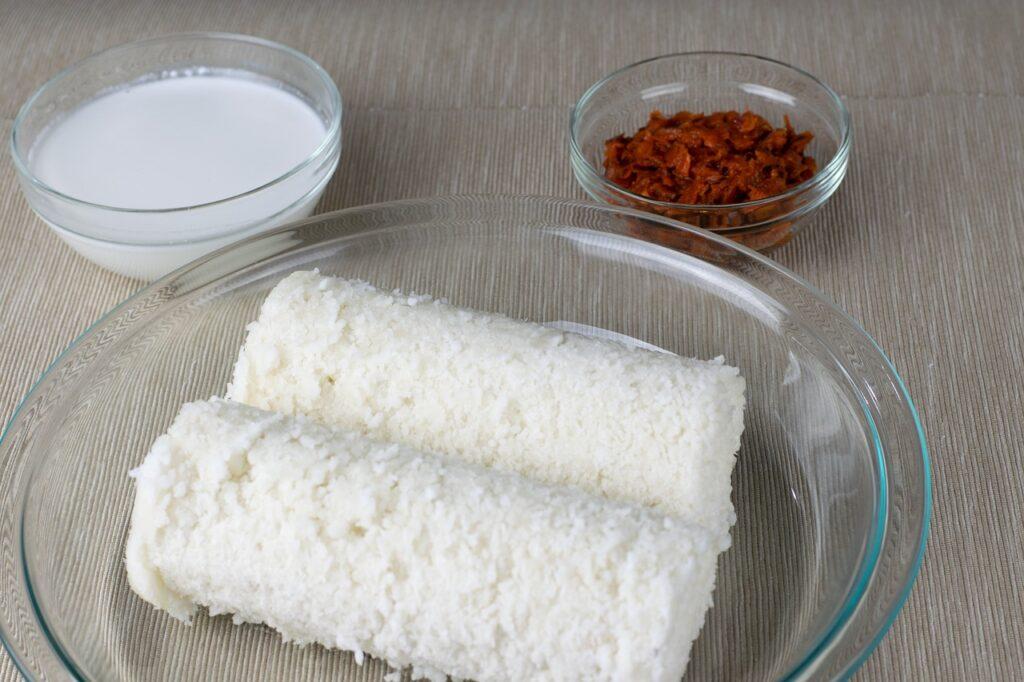
Pittu is a traditional Sri Lankan dish consisting of a mixture of rice or millet flour and grated coconut. The mixture is put into cylinder molds or bamboo tubes and steamed until it becomes firm. Pittu is usually served for breakfast or dinner and is an ideal accompaniment to curries, sambols or milk.
2.6 Watalappan
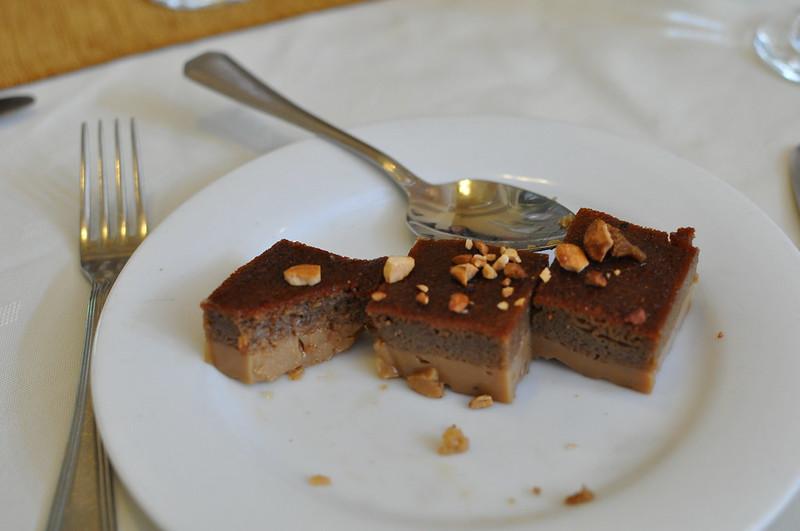
Watalappan is a delicious Sri Lankan dessert made from a mixture of coconut milk, eggs, palm sugar and spices such as cardamom, cloves and nutmeg. The mixture is made into a custard and then cooked in a steam bath. The result is a soft, spicy and sweet pudding that is often served on special occasions or celebrations.
3. Snacks and finger food
Sri Lanka also offers a variety of snacks and finger foods that are ideal for satisfying those in-between snacks. Here are some of the most popular snacks you should try during your trip:
3.1 Short Eats
Short Eats are small, hearty snacks that are very popular in Sri Lanka. They are often sold in bakeries, street stalls or cafes and are ideal for a quick snack. Typical short eats include pies, stuffed buns, dumplings, and various fried snacks.
3.2 Samosas
Samosas are triangular dumplings filled with a spicy filling of vegetables, meat, or fish and then deep-fried. They are crispy, spicy and extremely tasty. Samosas are a popular snack in Sri Lanka and can be found at street stalls, snack bars, or restaurants.
3.3 Roti
Roti is a flatbread that is served in Sri Lanka both as an accompaniment to curries and as a snack on its own. There are many varieties of roti, such as pol roti, which is made from shredded coconut and wheat flour, or paratha, a layered, buttery flatbread. Roti can be served with a variety of fillings or dips and is a versatile, tasty snack.
3.4 Achcharu
Achcharu is a Sri Lankan specialty consisting of pickled vegetables and fruits. The ingredients are pickled in vinegar, salt, sugar, and spices and then fermented for a period of time. The result is a sweet and sour, spicy and pungent flavor that goes great with rice and curry dishes.
4. Drinks and refreshments
Sri Lanka also offers a variety of drinks and refreshments that are perfect for quenching a thirst or rounding out a meal. Here are some of the most popular drinks you can enjoy during your trip:
4.1 Tea
Sri Lanka is famous for its high quality tea, grown in the cooler mountainous regions of the country. The most famous types of tea are Ceylon Black Tea, Ceylon Green Tea and Ceylon White Tea. Tea is traditionally served with milk and sugar in Sri Lanka and is an important part of the daily tea break known as “tea time.”
4.2 Royal Coconut Water
King coconut, also known as thambili, is a special type of coconut native to Sri Lanka. Its water is sweeter and more refreshing than the water of ordinary coconuts and is a popular natural refreshing drink. King coconut water is rich in electrolytes and minerals and is great for quenching thirst on hot days or replenishing fluids after a long trip.
4.3 Arrak
Arrak is a traditional Sri Lankan alcohol made from the fermented juice of coconut flowers. The taste of arrack is sweet and reminiscent of rum, but with its own distinctive flavor. Arrak is often served neat, over ice, or in cocktails and is a popular accompaniment to Sri Lankan dishes.
4.4 Fruit juices and smoothies
Due to the abundance of fresh, tropical fruits in Sri Lanka, fruit juices and smoothies are a popular and refreshing option. Common fruits include pineapple, papaya, mango, watermelon and passion fruit. The juices are often freshly squeezed and served without added sugar, so you can enjoy the pure taste of the fruit.
5. Vegetarian and vegan options
Sri Lankan cuisine also offers a variety of vegetarian and vegan options that are both tasty and nutritious. Here are some of the most popular vegetarian dishes you should try:
5.1 Dhal Curry
Dhal curry is a simple but delicious lentil dish that is very popular in Sri Lanka. It consists of red lentils cooked with coconut milk, tomatoes, onions and a variety of spices. Dhal curry is a high protein, vegan dish that goes great with rice or roti.
5.2 Mallung
Mallung is a Sri Lankan side dish made of finely chopped leafy vegetables mixed with grated coconut, onions, green chilies, and spices, then briefly fried. Mallung is a healthy, vegan option that pairs perfectly with rice and curry.
5.3 Polos Curry
Polos Curry is a delicious vegan curry made from unripe jackfruit that is very popular in Sri Lanka. The jackfruit is cooked with a mixture of spices, coconut milk and pandan leaves, giving the dish a unique texture and spicy flavor. Polo’s curry is an excellent alternative to meat or fish curries and tastes great with rice or roti.
6. Food culture and traditions
Sri Lanka’s food culture and traditions are characterized by the variety of ingredients, hospitality and love of food. Here are some aspects of food culture and traditions that you will experience during your trip to Sri Lanka:
6.1 Meals
There are generally three main meals eaten in Sri Lanka: Breakfast, lunch and dinner. Rice and curry are the main components of most meals, with lunch often being the largest and most important meal of the day. Breakfast usually consists of lighter dishes such as hoppers, pittu, or roti served with a variety of side dishes. For dinner, dishes similar to those served for lunch are often served, but often in smaller portions.
6.2 Eating habits and table manners
Traditionally, Sri Lankans eat with the fingers of their right hand, mixing the rice and side dishes and forming them into small balls. This way of eating allows people to better perceive and enjoy the different flavors and textures of the dishes. However, in restaurants and on more formal occasions, cutlery and napkins are often provided.
6.3 Hospitality
Hospitality is an important part of Sri Lankan culture, and locals take pride in treating their guests to delicious food and drink. It is not uncommon to be offered an abundance of dishes and snacks when visiting a Sri Lankan family. In such situations, it is appropriate to try at least a little of each dish to express your appreciation for the effort and hospitality.
7. Tips for tourists
If you are visiting Sri Lanka and want to explore the country’s diverse and delicious cuisine, here are some tips to help you get the most out of your trip:
7.1 Local Restaurants and Snack Stalls
To enjoy authentic Sri Lankan food, visit local restaurants and food stalls instead of eating at large hotels or tourist restaurants. There you will often find a wider selection of dishes and can enjoy the cuisine at a fraction of the cost.
7.2 Spiciness and spices
Sri Lankan food can be very hot and spicy, so always ask about the level of spiciness when ordering dishes. Many restaurants are willing to adjust the spiciness level of dishes to suit your preferences, so you can enjoy the flavors without unpleasant surprises.
7.3 Hygiene and drinking water
When choosing restaurants and food stalls, pay attention to hygiene standards to avoid possible stomach upsets. Do not drink tap water and be sure to use only bottled or boiled water to protect your health during the trip.
7.4 Food allergies and intolerances
If you suffer from food allergies or intolerances, it is advisable to mention this in advance when ordering dishes. Many restaurants are willing to adapt dishes to your needs, so you can enjoy Sri Lankan cuisine without worry.
8. Culinary experiences for tourists
During your stay in Sri Lanka, you can enjoy various culinary experiences that will help you get to know the local cuisine better and experience Sri Lankan culture and traditions firsthand. Here are some suggestions for culinary experiences that you should not miss as a tourist in Sri Lanka:
8.1 Cooking Classes
A great way to get to know Sri Lankan cuisine better is to attend a cooking class. Many hotels, guesthouses and local families offer cooking classes where you can learn how to prepare authentic Sri Lankan dishes. You will use fresh, local ingredients and learn about the different spices and techniques used in Sri Lankan cuisine. A cooking class is not only educational, but also a fun and hands-on experience that will give you a lasting memory of your trip to Sri Lanka.
8.2 Market Visits
Visiting a local market is a great way to discover the variety and freshness of ingredients used in Sri Lankan cuisine. You can discover exotic fruits, vegetables and spices that you may have never seen before and watch the locals do their daily shopping. A visit to the market will also give you the opportunity to try local specialties such as spicy sambols, fried snacks and sweet treats.
8.3 Street Food Tour
A street food tour is an exciting way to experience the authentic flavors of Sri Lankan cuisine. Stroll through the streets and alleys of towns and villages, sampling local specialties such as kottu roti, hoppers, samosas, and various curries directly from street stalls and small snack bars. A street food tour will allow you to discover the diversity of Sri Lankan cuisine while enjoying the lively atmosphere of the country.
8.4 Tea Picking Experience
Sri Lanka is known worldwide for its high-quality tea, and a visit to a tea plantation is a must for any tourist. On a tea picking experience, you can visit the beautiful tea gardens, watch the tea pickers at work, and even try to pick the delicate tea leaves yourself. Afterwards, you can visit a tea factory to learn more about the production process, and of course taste different kinds of tea.
8.5 Traditional Sri Lankan Meals
To truly experience Sri Lankan food culture, be sure to enjoy a traditional Sri Lankan meal. Many restaurants, guesthouses and local families offer special meals that include a variety of Sri Lankan dishes and specialties. These often include rice and curries served on banana leaves, and you can discover the different flavors and textures of Sri Lankan cuisine. A traditional Sri Lankan meal also gives you the opportunity to experience the hospitality of the locals and learn more about the country’s eating habits and customs.
8.6 Ayurvedic Cooking
Ayurveda is an ancient Indian healing art that is also widely practiced in Sri Lanka and is closely associated with Sri Lankan cuisine. Many Sri Lankan dishes and ingredients have Ayurvedic properties and are said to promote physical and mental well-being. At some hotels, spas and retreats, you can enjoy Ayurvedic cooking classes or meals that teach you how to prepare healthy and healing dishes that are both delicious and beneficial to the body and mind.
8.7 Participation in festivals and celebrations
Sri Lanka is a country with many festivals and celebrations in which food and drink play a central role. If you are able to attend a religious or cultural celebration during your stay in Sri Lanka, take the opportunity to sample traditional dishes, sweets and drinks prepared especially for these occasions. Some examples are the Sri Lankan New Year, the Vesak festival and the Esala Perahera festival.
8.8 Wine and beer tasting
Although Sri Lanka may not be known as a wine country, there are some local wines made from indigenous fruits such as pineapple, mango and cashew apples. A wine tasting offers you the opportunity to sample these unusual and delicious wines and learn more about local wine production. Likewise, Sri Lanka is also known for its beer production, especially the popular Lion Lager. A beer tasting offers you the opportunity to try different Sri Lankan beers and learn about the history and traditions of beer production in the country.
By engaging in these culinary experiences, you will gain a deeper insight into Sri Lankan culture and cuisine and create unforgettable memories of your trip. Don’t hesitate to try new flavors and dishes and discover the unique culinary world of Sri Lanka.
9. Conclusion
Sri Lankan cuisine is a tantalizing and diverse blend of flavors, textures and colors, informed by the country’s rich history, culture and natural resources. From spicy curries and sweet desserts to refreshing drinks and savory snacks, Sri Lankan cuisine has something for everyone.
As a tourist in Sri Lanka, take the opportunity to visit local restaurants and food stalls to sample authentic Sri Lankan dishes. Be aware of hygiene standards and inform the staff of any food allergies or intolerances to ensure you enjoy Sri Lankan cuisine to the fullest.
Sri Lankan food culture is characterized by hospitality and a love of food, and it is not uncommon to be treated to an abundance of dishes and snacks when visiting a Sri Lankan family. Show your appreciation by sampling at least a little of each dish and enjoying Sri Lanka’s culinary delights.
Overall, Sri Lankan cuisine offers an exciting and delicious culinary experience that will take your palate on a journey through the exotic flavors and spices of the country. Take advantage of your trip to Sri Lanka to discover and enjoy the country’s diverse and tasty cuisine.
